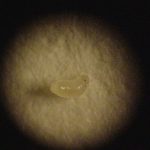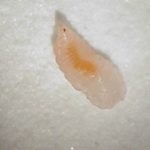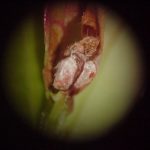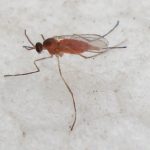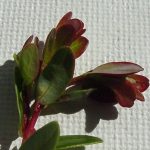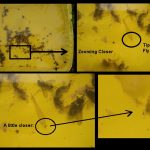- Cranberry tipworm eggs
- Three Cranberry tipworm Eggs
- Two Cranberry tipworm eggs
- 1st-instar cranberry tipworm larva perched atop the tip of a pair of forceps
- Cranberry tipworm 2nd instar larva (‘white’ stage)
- Cranberry tipworm 2nd-instar larvae (white stage)
- Magnified view of a cranberry tipworm 3rd-instar larva
- Cranberry tipworm 3rd-instar larva
- Cranberry tipworm 3rd-instar larva
- Cranberry tipworm 3rd-instar larva as viewed closer to what the naked eye would see
- A pair of Cranberry tipworm Cocoons
- A Cranberry tipworm pupa removed from its cocoon
- The pupal case left behind after a cranberry tipworm fly emerged from it.
- An empty cranberry tipworm cocoon (after the fly has emerged)
- Magnified view of a cranberry tipworm fly/midge – Dasineura oxycoccana (females are orange; males are black)
- Cranberry tipworm fly/midge beside a U.S. dime (for scale purposes)
- Cranberry tipworm fly/midge beside a U.S. dime (for scale purposes)
- Injury from Cranberry tipworm larval feeding (terminal growing point is clearly dead)
- Rebranching (regrowth) of lateral buds that takes place following tipworm injury to the terminal bud
- A yellow cakepan with soapy water that is being used by some growers for monitoring for presence of cranberry tipworm flies
- Brand new cranberry tips at the start of the season; these tender, new tips are the ones upon which female tipworm flies will lay their eggs at the very start of Maine’s cranberry growing season.




